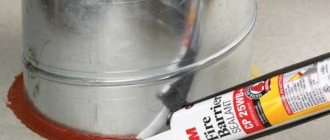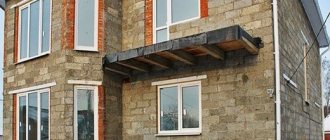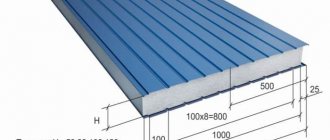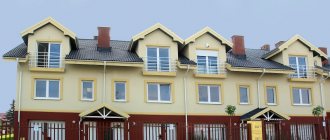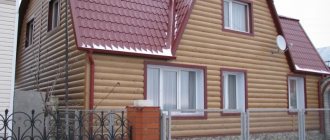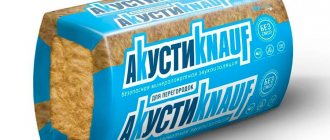Rubble stone is often used in the construction process, as well as by landscape designers. It is valued for its resistance to heavy loads, immunity to adverse conditions and long service life. Each purpose has its own type of stone, which has certain qualities and characteristics. Before purchasing it, you should familiarize yourself with all the nuances.
What it is?
Rubble stone is pieces of rock characterized by non-standard shapes . Usually, fragments of sedimentary type raw materials are mined, the density of which is at least 1800 kg/1 m3. In most cases, limestone, sandstone, shell rock or diorite are used for mining. Rubble is also used to make crushed stone.
On sale you can find rectangular, rounded or sloping stones.
Characteristics of rubble stone.
- High strength. Brands M1200-M1400 are considered the most durable.
- Resistant to negative temperatures. For regions with harsh winters, use the F3000, F4000 brand.
- The compaction coefficient of the rubble depends on the dimensions of the boulder and is located at a medium or high level.
- The specific gravity varies depending on the selected variety. As a rule, a cubic meter of raw materials will weigh 2-3 tons.
- Volumetric weight no more than 50 kg.
- Bulk density is characterized by 1.3-1.9 tons per cubic meter.
- The size of the fractions is 25-50 cm.
If rubble stone is purchased for construction, you should choose a grade without cracks. You also need to pay attention to the “purity” indicator: the amount of clay or marl impurities should not exceed 2%. Purity can be determined by hitting a boulder with a sledgehammer: the higher the sonority and evenness of the sound of the blow, the more homogeneous the structure.
Advantages and disadvantages
The advantages of buta include several properties.
- Long service life . If installation is carried out correctly, the raw material can last several hundred years. Granite rubble is used for gabion structures.
- Environmental friendliness. Booth belongs to the category of natural, natural raw materials. No chemical components are used during processing. This suggests that the stone is safe for people and nature.
- Aesthetic component . Rubble stone is presented in a wide range of colors, which makes it possible to create different compositions.
- Availability . Since the stone is natural, it is easy to mine and can be used independently.
- Practicality. Bottle is a cheap material that does not require a manufacturing plant, special equipment or equipped sites.
- Resistant to wear. Raw materials are not afraid of temperature changes, exposure to wind, humidity, insect and fungal attacks. The stone can cope with any load.
Among the shortcomings, only one point can be highlighted - installation is too difficult. In order to install the rubble, you will need a certain dexterity and ingenuity.
Technological side
Before starting construction, it is necessary to calculate the required amount of material. Even for a small private house you may need more than 1 ton of rubble. The work takes a long time, so construction is planned during rain-free periods.
You should also refrain from working in winter. In this case, constant heating of the solution is necessary. Rubble foundations are erected where building material can be easily obtained. If the area has soft soils (chernozems), then before laying stone slabs, a high-quality sand cushion should be made to avoid subsidence of the stones.
The technology is such that the width of the foundation below is much greater than on the surface. This is necessary to increase the stability of the structure.
Application area
Rubble stone is used for the construction and finishing of the following objects:
- Foundations of structures that can be classified as monumental.
- Engineering structures. These include retaining walls and various enclosing structures in unheated structures.
- Hydraulic structures such as canals, wells, settling tanks, etc.
- Low height fences.
- Paving of roads and sidewalks in elite areas of settlements.
- Landscape and decorative elements.
- Finishing of plinths and facades of buildings and finishing of fences.
Rubble strip foundations attract the attention of builders because they do not require reinforcement, the role of which is performed by the stone plates themselves.
For hydraulic structures, the dimensions of rubble stone required are somewhat smaller than those indicated above. The weight should not exceed 30 kg, and the size should be limited to 300 - 350 mm.
Alpine slides, decorative pools, fountains, and frames for flower beds and lawns look especially impressive when made from this material.
Recommendations from professionals
With a professional approach to work, you can reduce the time required to pour the foundation by several times. There are instructions for this:
Work with rubble on a marked area
- The site is marked.
- Trenches are dug and formwork is installed.
- A little sand is poured into the finished trench and stones are placed there, pressing them into the created “cushion”.
- All gaps resulting from laying are filled with crushed stone and compacted.
- Prepare a concrete mixture (1:3) and pour it into the first row to make it more durable.
- Another row is laid out using the same principle. At the same time, do not forget to “bandage” the seams, as when laying brick material.
- The rows that will protrude above the ground are reinforced with wire or relief reinforcement.
By following these fairly simple recommendations, you can lay out the rubble base much faster. The result is a reliable and durable structure that can withstand the heaviest buildings and is designed for long-term use.
Technical characteristics and classification
- The main characteristic of rubble stone is its compressive resistance. It is this parameter that determines the grade of the material, which ranges from 100 to 1200. In other words, rubble stone can withstand compressive loads from 100 kg/cm2 to 1200 kg/cm2.
- The frost resistance of rubble must be at least 15 cycles. That is, the material is subjected to freezing and thawing at least fifteen times and this does not affect its load-bearing capacity. Brands of rubble stone according to this indicator can range from F15 to F300.
- Flakiness is a very important characteristic of rubble. The concept of flakiness allows us to determine the ratio of needle-shaped and flat grains in a stone. According to this indicator, bute is divided into five groups from group V (35-50%) to group I (less than 10%).
- The radioactivity of the material is divided into two classes:
- Class I (up to 370 Bq/kg) for the use of rubble in residential areas and populated areas;
- Class II (over 370 Bq/kg) for the use of stone in industrial construction.
There is another absolutely individual indicator, which is characterized by the tonality of the sound made by the stone after being hit with a hammer. The louder and smoother the sound, the fewer various impurities in the stone, the more uniform its structure.
Types of rubble stones
- Industrial bottle. It is a rock stone, which was obtained by explosive method and was processed in crushing machines located at enterprises producing crushed stone. Most often, this type of rubble is mined in quarries using the stripping method. After blasting, an “aggregate” stone is obtained, which is removed from the quarry for further fractionation. The most suitable rocks for producing industrial rubble are limestone and sandstone, which, due to their physical and chemical properties, fully satisfy the needs of builders. Such important structures as dams, dams, bridge supports, and foundations of industrial facilities are erected from industrial rubble.
- Decorative rubble is a rubble stone that has been processed for finishing work and has the following distinctive features:
- Its dimensions range from 150 to 300 mm.
The configuration of each stone should resemble a disk, which will allow for finishing work to slightly increase the thickness of the wall or fence.
- Increased requirements for the cleanliness of each stone, requiring its cleaning before installation.
- Requires additional edge processing for adjustment during installation or to create a specific pattern.
- Rounded bottle - this is a stone that was extracted from reservoirs or subjected to special processing, as a result of which all the edges acquired rounded shapes. Very often, such stones are found in areas where tectonic shifts occurred during the Ice Age, which, rolling the stones, gave their surface irregular shapes with rounded sides. They are colloquially called “cobblestones”. You can download that rounded rubble is one of the most ancient stone materials, which was used both in Ancient Egypt and Rome. Most often they are used for:
- Paving roads and squares.
- Construction of fountains and decorative pools with artificial grottoes.
- Framing flower beds and lawns.
- Creation of decorative retaining walls.
- Creation of exclusive landscape elements.
- The bedded rubble has the shape of a parallelepiped and can be fully called the prototype of modern brick. It gets its name from the top and bottom edges of the stone, which masons call “beds.” The thickness of the slabs to obtain bedded rubble is at least 70 mm. Fences are erected from it, decorative borders are created, and building plinths are finished.
Decorative bottles are extracted exclusively by hand, since only careful handling of its surface allows it to preserve its uniqueness and artistic value. Especially in great demand are decorative stones, which over the course of centuries have received impressions of grass, moss branches on their surface, and have inclusions of other geological rocks in their bodies. This imprint of time gives them an antique charm. Nowadays, there are technologies that make it possible to artificially age a stone. All these factors significantly increase the cost of decorative rubble.
- Firstly, before starting any work with rubble stone, it is necessary to sort and sort it according to the following characteristics: By size, which will allow the stones to be laid correctly when performing masonry or finishing work, ensuring maximum strength characteristics of the structure.
- By color. This is especially important if rubble stone will serve as a finishing material. This will allow you to choose a color scheme that matches the design concept for finishing the structures.
After sorting and cleaning the rubble stone, you can begin stone work:
- Immediately before starting masonry, the rubble must be thoroughly soaked in water, since when it comes into contact with the mortar, it can remove water from it and thereby weaken the grade of the mortar.
- The first row of stones must be laid directly on the fresh concrete of the foundation (or plinth) of the building approximately four hours after the concrete has been laid. This will result in achieving high-quality adhesion between the foundation structure and the wall structure.
- To ensure an even plane of the wall, you need to pull the string from corner to corner of the building. If the dimensions of the building are large enough, then the entire length of the wall must be divided into sections of 5 - 6 meters.
- After the concrete has set, you can lay the wall using the traditional “classical” method.
- After a row or two has been laid out, after the initial setting of the mortar on which the stones are laid, it is necessary to undo the joints, which will give the wall a more neat and artistic look. When making joints, you must remember that there should be no holes or depressions between the stones in which water can accumulate or snow can accumulate. This can lead to the destruction of the wall and the formation of cracks.
Foundation
Since ancient times, rubble has been used for the construction of house supports. The pillars or foundation have withstood the loads of millennia and still demonstrate enviable durability.
Such a fundamental basis will be massive, and its creation will require large physical expenditures . However, all efforts will be justified, because a rubble retaining wall is an eternal construction that is not afraid of frost, moisture and loads.
Experts recommend laying rubble for the foundation if a large load-bearing structure is planned.
Large boulders should be placed at the bottom in the corners to ensure the structure is strong. For the first row, a cement mixture is used, and the voids are filled with fine stones.
Construction of a rubble foundation is a good solution because:
- the building will have impeccable characteristics - the strength of the stone allows it to withstand the load of a two-story house;
- resistance to bad weather conditions, even floods, as well as immunity to mechanical stress;
- from the financial side, such a foundation is also beneficial - the laying is simple, so you can handle it without the help of specialized craftsmen;
- the rubble is suitable for construction on any terrain and soil;
- if the laying was done correctly, such a foundation will be attractive, even if it has not been lined.
It is worth understanding that ideal technologies do not exist, so you need to become familiar with the negative side of constructing a rubble foundation. This is primarily due to labor intensity. Despite the fact that construction is accompanied by simplicity, all actions can only be done manually. Technology will not help in this matter.
To make the building strong, you will need to use only massive stones. Therefore, you will need an assistant who will provide support.
Fence
Many people prefer a rubble fence because such a fence is characterized by beauty and can provide protection against noise from the street and exhaust from vehicles. Immunity to negative weather conditions allows the fence to serve for many years.
Rubble stones are characterized by irregular shapes, so spans should be created from them. It is recommended to make pillars from hewn raw materials. Limestone, granite, dolomite or sandstone grades are suitable for work. The foundation must be made of reliable material, because a rubble fence will have a lot of weight. In most cases, the fence is created only around the main facade, so you should immediately decide on the size of the gate or gate.
It must be taken into account that the foundation cannot be interrupted, since the greatest load is placed on these areas.
Facing
Since it is not possible to build rubble buildings in every case, some people resort to cladding using such material. When choosing raw materials, you should take into account the color scheme, pattern and shape of the stone . If you follow these conditions, you will get a real masterpiece.
The main types of rubble stone used in landscape design
Limestone
This is one of the most common materials of natural origin. Limestone is characterized by a rich range of colors. Based on your own tastes and personal preferences, you can use material of white, golden, cream and other colors. Another indisputable advantage of limestone is its ability to attract microorganisms, in particular moss. Although this property may seem like a disadvantage at first glance, it can significantly improve landscape design. There are also some downsides here. It is worth noting first of all the inability of limestone to resist natural destruction, which is usually observed under the influence of wind and moisture.
Sandstone
It has a wider range of colors than limestone. In nature, cream, sandy-golden, red, gray and many other types of sandstone are common. This is a more expensive material than limestone, but it is more durable.
Granite
It is a representative of one of the most common rocks. Granite is well known for its increased durability and special aesthetic appeal. It is widely used to create landscape design elements such as columns, benches, stairs, pillars and others. Any granite product will make the site more solid and luxurious.
Slate
It is also classified as a group of stones of natural origin, but its color palette is wider than that of granite. Purple, red, gray, green and other types of slate are found in nature. The variety of shades has made slate a very popular material in modern landscape design.
Decorating external corners
The outer corners of the building or other architectural details with stone cladding look original. At the same time, it is easy to save money by finishing the facade with decorative plaster.
Often, facade panels made of both natural stone and artificial materials are used for such cladding. These include siding and corrugated sheets. This significantly reduces the cost of construction and exterior finishing.
It is important to decide on the material and location of the lined architectural elements at the design stage.
Basic rules when working with boot
- Firstly, before starting any work with rubble stone, it is necessary to sort and sort it according to the following characteristics: By size, which will allow the stones to be laid correctly when performing masonry or finishing work, ensuring maximum strength characteristics of the structure.
- By color. This is especially important if rubble stone will serve as a finishing material. This will allow you to choose a color scheme that matches the design concept for finishing the structures.
Conclusion
Rubble concrete has many advantages, so it is often used in construction. However, like any other materials, it has some disadvantages that also need to be taken into account. (See also the article Finishing the facade of a house from aerated concrete: how to do it.)
In particular, if you decide to build a large permanent building, then you will have to abandon the rubble concrete foundation, since it will not support much weight. From the video in this article you can get some additional information about rubble concrete.
Rubble masonry technology
After sorting and cleaning the rubble stone, you can begin stone work:
- Immediately before starting masonry, the rubble must be thoroughly soaked in water, since when it comes into contact with the mortar, it can remove water from it and thereby weaken the grade of the mortar.
- The first row of stones must be laid directly on the fresh concrete of the foundation (or plinth) of the building approximately four hours after the concrete has been laid. This will result in achieving high-quality adhesion between the foundation structure and the wall structure.
- To ensure an even plane of the wall, you need to pull the string from corner to corner of the building. If the dimensions of the building are large enough, then the entire length of the wall must be divided into sections of 5 - 6 meters.
- After the concrete has set, you can lay the wall using the traditional “classical” method.
- After a row or two has been laid out, after the initial setting of the mortar on which the stones are laid, it is necessary to undo the joints, which will give the wall a more neat and artistic look. When making joints, you must remember that there should be no holes or depressions between the stones in which water can accumulate or snow can accumulate. This can lead to the destruction of the wall and the formation of cracks.
Video description
This video shows in detail how the foundation of a rubble foundation is laid:
Having filled the trench around the entire perimeter with one layer of rubble, it is filled with a solution that will fill all the spaces between the stones.
Laying subsequent rows
The next rows are laid on concrete that has not yet hardened, bandaging the seams. Due to the irregular shape and different thickness of the stones, the masonry will be uneven, with protrusions, depressions, and voids. They must be eliminated, if possible, by working with a tamper and sledgehammer, pouring crushed stone into the voids. Each laid row is poured with concrete and work continues.
It is important! Do not forget to mark in advance the places of passage through the foundation of underground communications and leave holes for them.
For the underground part of the foundation, the most uneven and unattractive stones are used, leaving more even and attractive stones for the construction of the base. Having reached ground level, work is carried out with extreme care. Laying out the row begins from the corners, selecting stones of the correct shape and approximately the same height for them. The cords are pulled between them and the row is laid, focusing on them. Particular attention is paid to the outside of the base, using substandard rubble to fill the inside.

